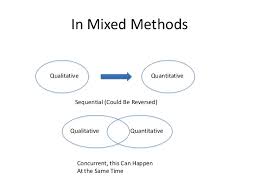
Employee job satisfaction and productivity;Existing Mixed Methods Studies
Order Instructions:
For this paper, the writer will reference to 113277 to see the format in which that paper was done as this will be completed in the same format especially for the synopsis. It is also important that the writer use articles not more that 5 years old and also the should be pear review.
Existing Mixed Methods Studies
Return to your Literature Review and peruse the mixed methods studies you found for additional resources that pertain to your topic (Employee job satisfaction and productivity). Conduct additional searches through the internet (not more than 5 years old and pear review ) for relevant studies that either pertain directly to your topic or that pertain to related topics and could inform a mixed methods study of your topic. Perhaps these studies provide a model, research instrument, framework, or hypothesis that informs your own evolving thinking.
Post a brief synopsis of the mixed methods studies you found as a “.doc” or “.rtf” attachment. For each entry, provide the full APA citation, as well as a brief paragraph that explains the contribution the study makes to your own topic (Employee job satisfaction and productivity) either directly or tangentially. In the text of your posting (to which you will attach your synopsis), introduce and summarize the mixed methods studies as a collection, and post at least two questions that will elicit suggestions and further responses from your colleagues.
SAMPLE ANSWER
Introduction
Employee’s production at any work place is largely influenced by Job satisfaction. Several methods of research can be utilized to support the notion (Choudhury & Friedman, 2015). In this research proposal, mixed research methods has been preferred to shed some light on the nature of relationship or correlation that exist between employee productivity and job satisfaction and the different ways that an employee productivity can be affected.
The mixed research study would assist in the collection of the required information that would make it possible to determine if there is a relationship between job production and job satisfaction among employees (Migiro & Magangi, 2011). The influence of job satisfaction and productivity would be investigated. The mixed research methods that have been used during the foundation of the research methods data collection processes and the application of the same concept of mixed research methods would be incorporated to determine if the relationship that exists can affect job satisfaction in the same industry (Klein & Olbrecht, 2011). The mixed research methods may include multiple forms of both qualitative and quantitative data methods, mixture of variables, words and images while the final report would be eclectic and pragmatic.
The aim of the mixed research study is to provide a mixture of the best concepts qualitative research methods and the best of quantitative research methods to produce a refined analysis of the research question on study. The mixed research method identifies the best strategies to ensure factors that affect employee productivity and the influence of job satisfaction are monitored. The effects of remuneration, bonuses, promotions, demotions and other close relationships are closely monitored and their effects on job satisfaction and productivity analyzed and evaluated (Naquin, Cole, Bowers & Walkwitz, 2010)
The study targets to identify the greatest impediment to job satisfaction and the issues that critically affects productivity.
The mixed research study also aims at identifying several ways of enhancing employee satisfaction and improvement of employee retention. Employee attitudes and behaviors towards more productivity would also be investigated. The research seeks to investigate the best strategies towards employee job satisfaction and productivity.
The mixed research study adopted methodology is well defined. It would involve a number of employees who have been randomly selected from several companies. The criteria for selecting the participants would involve random selection of names from the employers time sheets and only four employees per company would take part; two form the lower positions while the other two from managerial levels. The questions would cover all the areas of employee’s life including personal questions on domestic home budget, medical allowances and employment income. Employee’s personal feelings on the company would also be documented but the identities of the employees would be protected. Their responses finally would be analyzed and compared with the hypothesis that had been formulated. Intensive observational research and in-depth interviews would be utilized to collect the necessary data for the study. In the mixed research study, the response rate was 85% hence its results would be credible (Mills, 2011).
The research summary of the findings were adopted and analyzed using the standard statistical measures including correlation method. The mixed research method provides accurate empirical measurement together with the levels of job satisfaction in employees and their relationships at work. The responses clearly show that the better and closer the relationship between employees and employers the better and higher the levels of job satisfaction productivity among the employees (Mills, 2011). A healthy relationship between employees and employers results in improved productivity for the company. Innovation and autonomy provides better opportunities for ambitious employees to be more innovative and productive as managers register good performance among average employees allowing a spiral effect to continue hence leading to more productivity and better working environment including improved terms for all the employees (Migiro & Magangi, 2011).
The main aim of mixed research study is to provide more research that would reveal insight on the test of hypothesis while studying the effects and predictions of other variables. Mixed research method assists in identifying the real issues behind individual behavior. Employee behavior is very difficult to monitor and observe. Different people have varying ways of coping with emotions and daily stresses and mixed research methods provides the resources required for close observation and also intensive interviews for deep insight into the real issues that determine the relationship between job satisfaction and productivity.
References
Choudhury, S., & Friedman, M. (2015). A study of employee satisfaction with HMO services at a historically black university. In Proceedings of the 1996 Multicultural Marketing Conference (pp. 81-84). Springer International Publishing.
Klein, T. & Olbrecht, M. (2011) Triangulation of Qualitative and Quantitative Methods in Panel Peer Review Research, International Journal for Cross-Disciplinary Subjects in Education(IJCDSE), Volume 2, Issue 2, June. Retrieved August 12, 2015 from http://www.infonomics-society.org/IJCDSE/Triangulation%20of%20Qualitative%20and%20Quantitative%20Methods%20in%20Panel%20Peer%20Review%20Research.pdf
Migiro, S.O. & Magangi, B.A. (2011). Mixed methods: A review of literature and the future of the new research paradigm. African Journal of Business Management, Academic Journals Review.
5(10), 3757-3764. Retrieved from: http://www.academicjournals.org/AJBM
Mills, G. E. (2011). Action research – A guide for the teacher researcher. Boston, MA:
>>>>Pearson Education, Inc.
Naquin, M., Cole, D., Bowers, A., & Walkwitz, E. (2010). Environmental health knowledge, attitudes, and practices of students in grades four through eight, Journal of Research, 6(2), 45-50.
We can write this or a similar paper for you! Simply fill the order form!












